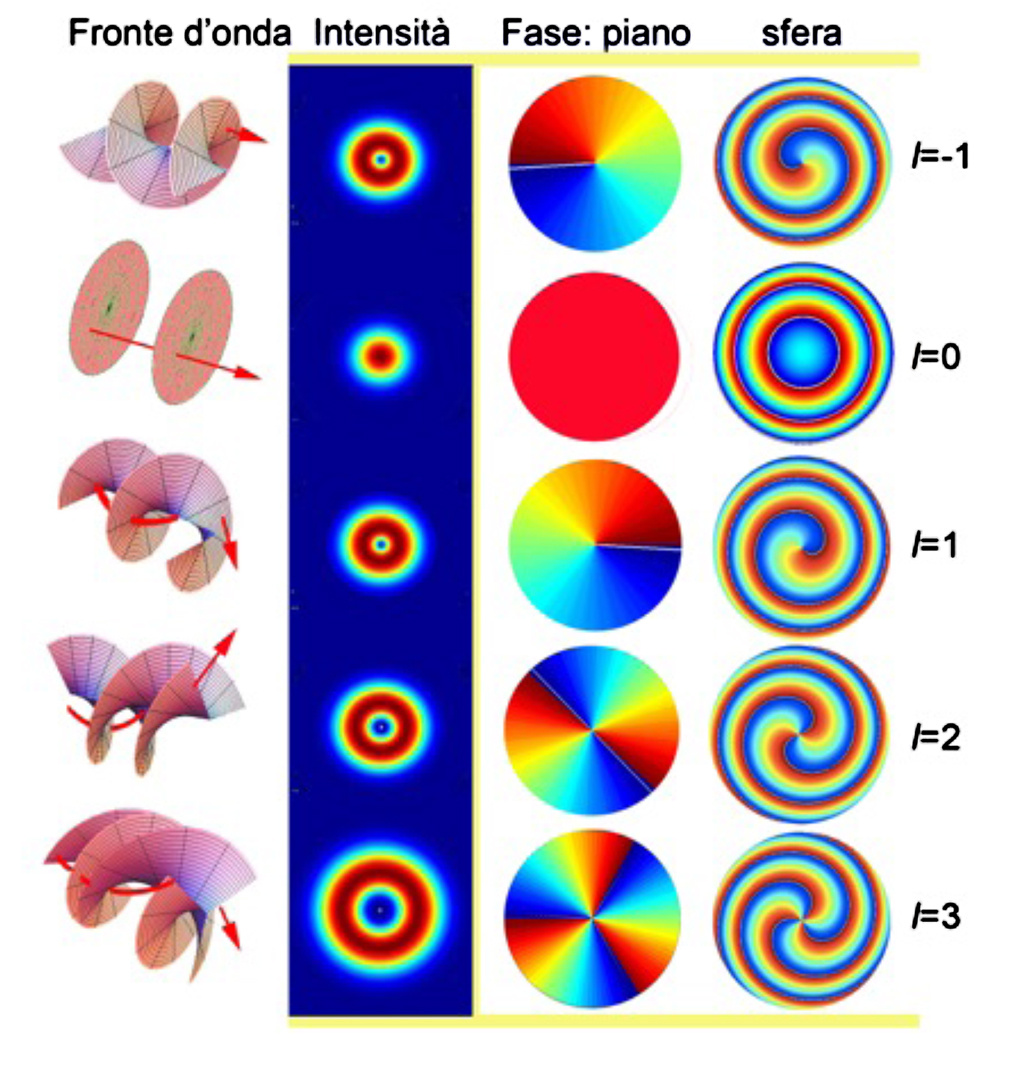- Exhibition
GLOBALE: Fabrizio Tamburini: Beyond Einstein’s Dream. Riding the Photons
Sat, September 05, 2015 – Sun, January 31, 2016
- Location
- Atrium 7
As part of the exhibtion »Infosphere«, Fabrizio Tamburini is presenting in three installations his new model of light: light as a vortex, as a twisted electromagnetic wave.
We obtain much of our knowledge of the universe through light. Electromagnetic waves become new tools to explore the universe and to interact with it. Human beings use the ethereal qualities of light as new and powerful tools. Distorted light and other conserved quantities of electromagnetic fields represent degrees of freedom that are to be used to interact with the world.
We obtain much of our knowledge of the universe through light. Electromagnetic waves become new tools to explore the universe and to interact with it. Human beings use the ethereal qualities of light as new and powerful tools. Distorted light and other conserved quantities of electromagnetic fields represent degrees of freedom that are to be used to interact with the world.
Electromagnetic Degrees of Freedom
This installation is an OAM-based MIMO (multiple-input-multiple-output) multiplex telecommunications system. Videos are shown on a monitor to explain spin, orbital angular momentum (OAM), and 84 other known conserved quantities. It revisits the San Marco experiment (2011), during which the multiple use of frequencies was attained by using a twisted wave that featured another degree of freedom, polarization, along with OAM. Polarization is related to an intrinsic quality of photons, their spin. OAM, by contrast, is an extrinsic quality of a field. Spin is like the earth’s daily rotation on its axis. OAM is rotation around a point, like the earth’s orbit around the sun. These two quantities remain interlinked in order to transport information while a wave travels through space. Spatial information is transported via the vortex of the twisted wave. Orientation, by contrast, is transmitted through polarization, opening up new possibilities for telecommunication.Twisted MIMO (Uppsala experiment)
To give spatial information a twist requires actions. Multiple use of frequencies is attained by applying an electromagnetic vortex with phase rotation, and a single antenna. The new method of spatial information enables multiple use of frequencies similar to that available with the use of multiple antennae. Human beings (the experimenters) interact with the vortex and the spherical wave by moving two reception antennae, thus adjusting two video channels. When people move within the space, which has invisible waves running through it that change their state through reflection, absorption and refraction, this is made directly visible, through random changes and interference in the two channels.Mathematical space
This presents the mathematical space that made the San Marco experiment possible – a small step forward, into the light.Imprint
- Curator
- Curator
Accompanying program
